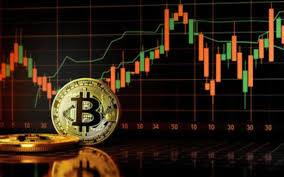17
May
Mastering Crypto Trading High-Frequency Strategies

Mastering Crypto Trading High-Frequency Strategies
High-frequency trading (HFT) in the cryptocurrency market is a dynamic and rapidly evolving field. Traders who engage in HFT utilize sophisticated algorithms and high-speed internet connections to execute myriad trades in fractions of a second. This method of trading capitalizes on the minute price differences that can occur within milliseconds. For those looking to delve deeper into the strategies and techniques of Crypto Trading High-Frequency, incorporating elements of technology, risk management, and market understanding is crucial. For more insights, check out this Crypto Trading High-Frequency https://www.brighteon.com/3a433bcc-b17d-4afc-a531-784e06a6bfb1.
The Foundations of High-Frequency Trading
At its core, high-frequency trading leverages automation to benefit from tiny price discrepancies. Traders employ algorithms—sets of rules that dictate trading decisions—which help reduce the latency between market data and trade execution. In the world of crypto, where volatility is high, these rapid trades can accumulate significant profits, even when individual trade margins are minimal. The technology behind HFT includes algorithmic trading platforms, state-of-the-art servers, and low-latency data feeds.
Key Components of High-Frequency Trading
High-frequency trading isn’t just about speed; it involves various components that contribute to a successful trading strategy. Here are the fundamental elements:
- Algorithm Design: Developing intricate algorithms tailored for specific trading strategies is essential. These algorithms evaluate market conditions and execute trades based on predetermined criteria.
- Data Analysis: Analyzing historical and real-time data helps traders fine-tune their strategies. A deep understanding of the cryptocurrency market trends can lead to better predictions and more efficient trades.
- Risk Management: Effective risk assessment tools help traders mitigate potential losses. This includes setting parameters for stop-loss orders and determining the capital allocated to each trade.
- Infrastructure: A robust technological setup, including powerful servers and high-speed internet connections, reduces latency and helps traders stay ahead of market movements.

Market Microstructure and its Impact
Understanding market microstructure is pivotal in high-frequency trading. Market microstructure refers to the processes and systems that facilitate trading, including the types of orders, execution venues, and the behavior of market participants. A well-informed trader can leverage this knowledge to optimize their trading strategies. For instance, recognizing liquidity patterns and fluctuations can provide insights into the best times to execute trades.
Ethical Considerations in High-Frequency Trading
While the allure of high-frequency trading might seem fascinating, it isn’t without controversy. Issues such as market manipulation, excessive volatility, and the ethical implications of having resources that are not accessible to all traders pose significant challenges. A responsible approach to trading involves adhering to regulations and ensuring fair practices within the market.
Technological Advancements in High-Frequency Trading
As technology continues to advance, high-frequency trading strategies evolve as well. The adoption of machine learning and artificial intelligence (AI) within trading algorithms is a growing trend, offering enhanced predictive capabilities. Additionally, developments in blockchain technology are reshaping the cryptocurrency landscape and could vastly improve transaction speeds, thus further influencing HFT strategies.
Challenges in Crypto High-Frequency Trading
Despite its potential rewards, engaging in high-frequency trading in the crypto space presents various challenges:
- Market Volatility: The cryptocurrency market is notoriously volatile, with prices that can change rapidly. This unpredictability can complicate the execution of high-frequency strategies.
- Regulatory Uncertainty: With shifting regulations across different countries, staying compliant with laws can be a daunting task for high-frequency traders.
- Competition: The HFT space is becoming increasingly crowded as more traders realize its potential. This heightened competition can compress profit margins.
Future Trends in Crypto High-Frequency Trading
As the cryptocurrency market continues to mature, several trends are anticipated to shape the future of high-frequency trading:
- Increased Institutional Participation: More institutional investors entering the cryptocurrency market is likely to enhance liquidity and create more opportunities for high-frequency traders.
- Enhanced Regulatory Frameworks: As governments seek to regulate the cryptocurrency space, clearer guidelines may help stabilize the market while ensuring fair play among traders.
- Integration of Advanced Technologies: The use of AI and machine learning will likely become more prevalent, leading to improved strategy development and execution.
Conclusion: Embracing the Future of High-Frequency Trading
High-frequency trading in the cryptocurrency market is not just about speed; it’s about innovation, strategy, and informed decision-making. Traders who can harness technology, understand the intricacies of the market, and implement sound risk management practices will have the upper hand in this competitive arena. Embracing the challenges and trends of HFT can pave the way for sustained success in crypto trading. By continuously adapting and learning, traders can position themselves to thrive in an ever-evolving market landscape.

